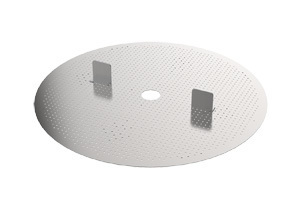Correct..By putting it to 1 means 1 degree + or - of the set temp..I was attempting to find the link to the youtube vid I watched that showed how to do it..
Going from cryptic notes I took to set mine up :
Hold down both the up and down arrows at the same time until it says FAC1, then use the up arrow to set 231(password), then press set..Use up arrow to go to F04, up arrow to 221 - this sets the highest allowed 'SET' temperature, then press 'SET'..Up arrow to F05, down arrow to 1 then press 'SET' - temp variance..Then UP arrow to F08 and put to 'HOT', press set...Then let it sit and reset- you will know when it does as it will flash 3 dashes '---' on the display..And you're set up..

I believe this is the link you're referring to:
http://youtu.be/NTIxjCD07vU
[/http://youtu.be/NTIxjCD07vU



 I brew on my GF almost every weekend so if you have any questions let us know. I have the graincoat, had the reflectix before but this looks way better and easier to remove and clean. I'd get the jacket. I also have the GF sparge water heater which I want to put a vavle on but so much nicer not having to use propane to heat sparge water. I brew indoors so I have to heat sparge water outside or have on my stove which is too far. can't wait to see your wheat recipe and how it came out. Ever in the need for an IPA recipe let me know.
I brew on my GF almost every weekend so if you have any questions let us know. I have the graincoat, had the reflectix before but this looks way better and easier to remove and clean. I'd get the jacket. I also have the GF sparge water heater which I want to put a vavle on but so much nicer not having to use propane to heat sparge water. I brew indoors so I have to heat sparge water outside or have on my stove which is too far. can't wait to see your wheat recipe and how it came out. Ever in the need for an IPA recipe let me know. 































![Craft A Brew - Safale BE-256 Yeast - Fermentis - Belgian Ale Dry Yeast - For Belgian & Strong Ales - Ingredients for Home Brewing - Beer Making Supplies - [3 Pack]](https://m.media-amazon.com/images/I/51bcKEwQmWL._SL500_.jpg)























